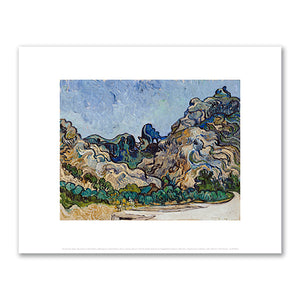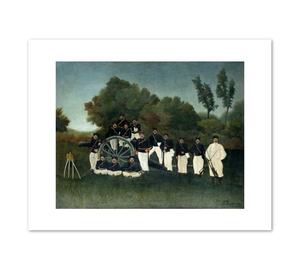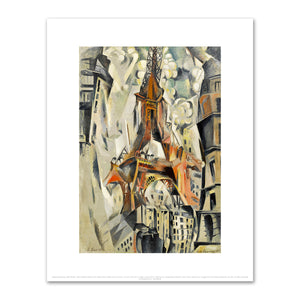Sammlung: Solomon R. Guggenheim Museum
Renowned for its collection of 19th- to 21st-century art as well as for the expanding spirals of its awe-inspiring Frank Lloyd Wright–designed building, the Solomon R. Guggenheim Museum began as the Museum of Non-Objective Painting. After collecting in a limited way with his wife Irene Rothschild Guggenheim, the wealthy industrialist Solomon R. Guggenheim began collecting nonobjective art in 1929 at the age of 66. He was counseled by Hilla Rebay, an artist, theorist, and tireless advocate for this artistic style, who became Guggenheim’s personal curator.
Guggenheim’s holdings quickly exceeded the limits of his apartment in the Plaza Hotel, where he and Rebay staged modest exhibitions. In 1939, he rented a building at 24 East 54th Street and put his collection on public display in the Museum of Non-Objective Painting. That space too became insufficient, and, in 1943 he and Rebay approached the then 76-year-old Wright to build a larger facility. Construction took more than 15 years, delayed by rising costs after World War II, Guggenheim’s illness, changes in the administration of the collection, and the progressive acquisition of land along New York’s most celebrated avenue. After Guggenheim’s death in 1949, the museum was renamed in his honor. Though critics were initially divided about the building, today it is considered one of Wright’s finest accomplishments.
This revolutionary building is a fitting memorial to Guggenheim. Thanks to its founder’s forward-thinking views on the art of his time, the Guggenheim Museum has one of the largest collections of Vasily Kandinsky’s art in the world in addition to works by such modern masters as Marc Chagall, Franz Marc, Amedeo Modigliani, and Pablo Picasso. The collection has since evolved through major acquisitions: Karl Nierendorf’s inventory of German Expressionist and early Abstract Expressionist art; Peggy Guggenheim’s collection of abstract and Surrealist painting and sculpture; Justin K. Thannhauser’s array of early modern masterpieces; important works from the estates of Katherine S. Dreier and Rebay; Dr. Giuseppe Panza di Biumo’s vast holdings of European and American Minimalist, Post-Minimalist, Environmental, and Conceptual art; an extensive contribution from the Robert Mapplethorpe Foundation; and the Bohen Foundation’s gift of contemporary photography, video, and installation art.
The Guggenheim Museum is also known for its exceptional exhibitions from modern and historical surveys such as the award-winning 1900: Art at the Crossroads (2000) to major retrospectives of artists such as Alexander Calder (1964–65), Rebecca Horn (1993), Kandinsky (1982, 1983, 1985, and 2009), Roy Lichtenstein (1994), Claes Oldenburg (1995), Robert Rauschenberg (1997), and David Smith (2006). The pronounced focus on contemporary art has led to critically acclaimed exhibitions such as Matthew Barney: The Cremaster Cycle (2003) and Cai Guo-Qiang: I Want to Believe (2008). At the same time, the institution’s mission to promote visual culture in all its diversity prompts the charting of less-explored terrain through regional shows such as The Aztec Empire (2004–05) and RUSSIA! Nine Hundred Years of Masterpieces and Master Collections (2005–06) as well as exhibitions of design and architecture, most notably in Frank Gehry, Architect (2001).
Guggenheim’s holdings quickly exceeded the limits of his apartment in the Plaza Hotel, where he and Rebay staged modest exhibitions. In 1939, he rented a building at 24 East 54th Street and put his collection on public display in the Museum of Non-Objective Painting. That space too became insufficient, and, in 1943 he and Rebay approached the then 76-year-old Wright to build a larger facility. Construction took more than 15 years, delayed by rising costs after World War II, Guggenheim’s illness, changes in the administration of the collection, and the progressive acquisition of land along New York’s most celebrated avenue. After Guggenheim’s death in 1949, the museum was renamed in his honor. Though critics were initially divided about the building, today it is considered one of Wright’s finest accomplishments.
This revolutionary building is a fitting memorial to Guggenheim. Thanks to its founder’s forward-thinking views on the art of his time, the Guggenheim Museum has one of the largest collections of Vasily Kandinsky’s art in the world in addition to works by such modern masters as Marc Chagall, Franz Marc, Amedeo Modigliani, and Pablo Picasso. The collection has since evolved through major acquisitions: Karl Nierendorf’s inventory of German Expressionist and early Abstract Expressionist art; Peggy Guggenheim’s collection of abstract and Surrealist painting and sculpture; Justin K. Thannhauser’s array of early modern masterpieces; important works from the estates of Katherine S. Dreier and Rebay; Dr. Giuseppe Panza di Biumo’s vast holdings of European and American Minimalist, Post-Minimalist, Environmental, and Conceptual art; an extensive contribution from the Robert Mapplethorpe Foundation; and the Bohen Foundation’s gift of contemporary photography, video, and installation art.
The Guggenheim Museum is also known for its exceptional exhibitions from modern and historical surveys such as the award-winning 1900: Art at the Crossroads (2000) to major retrospectives of artists such as Alexander Calder (1964–65), Rebecca Horn (1993), Kandinsky (1982, 1983, 1985, and 2009), Roy Lichtenstein (1994), Claes Oldenburg (1995), Robert Rauschenberg (1997), and David Smith (2006). The pronounced focus on contemporary art has led to critically acclaimed exhibitions such as Matthew Barney: The Cremaster Cycle (2003) and Cai Guo-Qiang: I Want to Believe (2008). At the same time, the institution’s mission to promote visual culture in all its diversity prompts the charting of less-explored terrain through regional shows such as The Aztec Empire (2004–05) and RUSSIA! Nine Hundred Years of Masterpieces and Master Collections (2005–06) as well as exhibitions of design and architecture, most notably in Frank Gehry, Architect (2001).
Before the Mirror (Devant la glace) by Édouard Manet


- Normaler Preis
- from €19,95 to €103,95
- Sonderpreis
- €103,95
Mountains at Saint-Rémy (Montagnes à Saint-Rémy) by Vincent Van Gogh


- Normaler Preis
- from €19,95 to €103,95
- Sonderpreis
- €103,95
Artillerymen (Les Artilleurs) by Henri Rousseau


- Normaler Preis
- from €19,95 to €103,95
- Sonderpreis
- €103,95
Eiffel Tower (Tour Eiffel) by Robert Delaunay


- Normaler Preis
- from €19,95 to €103,95
- Sonderpreis
- €103,95









